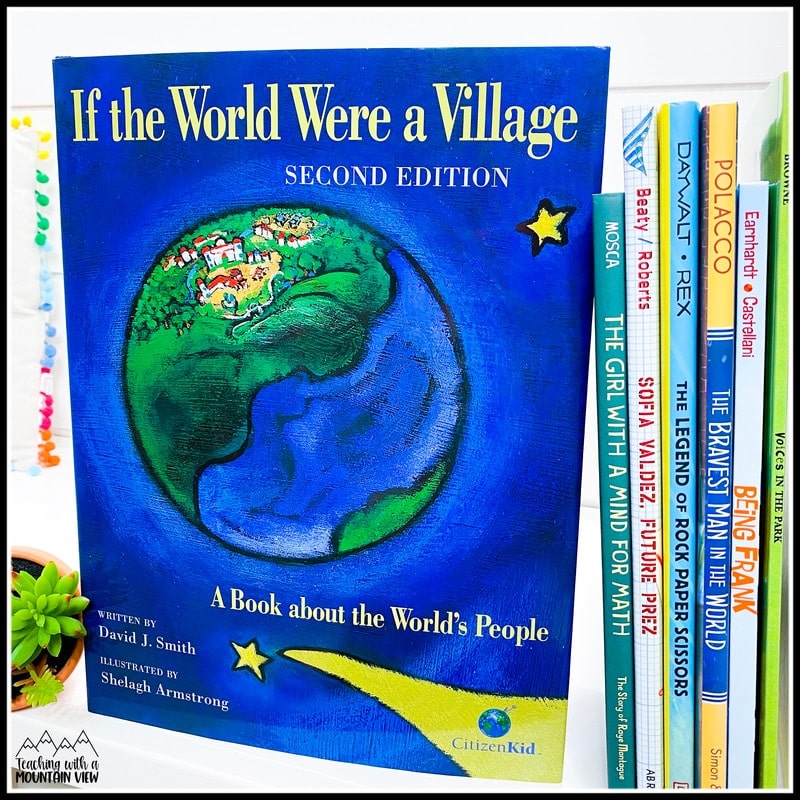In my last post, I wrote about how I introduced converting decimals and fractions. My students did so well with it and didn’t need too much more practice on it. However, I needed them to show me they could really apply their knowledge in other situations, but I didn’t want them simply working through worksheets to show me what they knew. Today I’m sharing, for FREE, the fractions and decimals project we did instead!
Since we are an IB school, we focus a lot on building international-minded citizens. Any time I can bring in an international concept, it’s a huge plus! I remembered a book I used to read my third graders during our community unit. It’s called If The World Were a Village and it’s one of those striking books that really sticks with you when you are done. The author takes the world’s population of about 6.9 billion people and puts it into a village with just 100 people– each person representing about 69 million people. Then, he gives pages and pages of statistics about the languages, nationalities, ages, etc. of the people in the village. I thought it would be a PERFECT book to make some connections with since all of the statistics would have a denominator of 100.
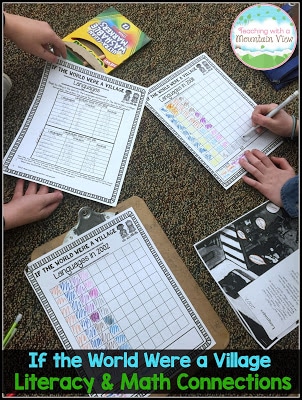
I set out creating a project for my students not really sure how it would look in the end. Since I wanted them converting fractions and decimals, I knew I wanted them showing their data on a hundreds chart model like we had worked on, and I knew I wanted them to do some critical thinking about their data.
I ended up taking four of the pages from the book and creating assignments to go with them. The pages and statistics I chose were on Nationalities, Languages, Ages, and Food. These pages had the most concrete data for the students to use and were most relatable to my kids.
I also got my hands on the first edition of the book (2002) AND the second edition (2011) so that my students could compare the data and see changes from one book to another. (NOTE: They don’t sell the first edition anymore, so unless you get it at the library (mine had it), you will need to use the second set of pages in the project which includes that data.)
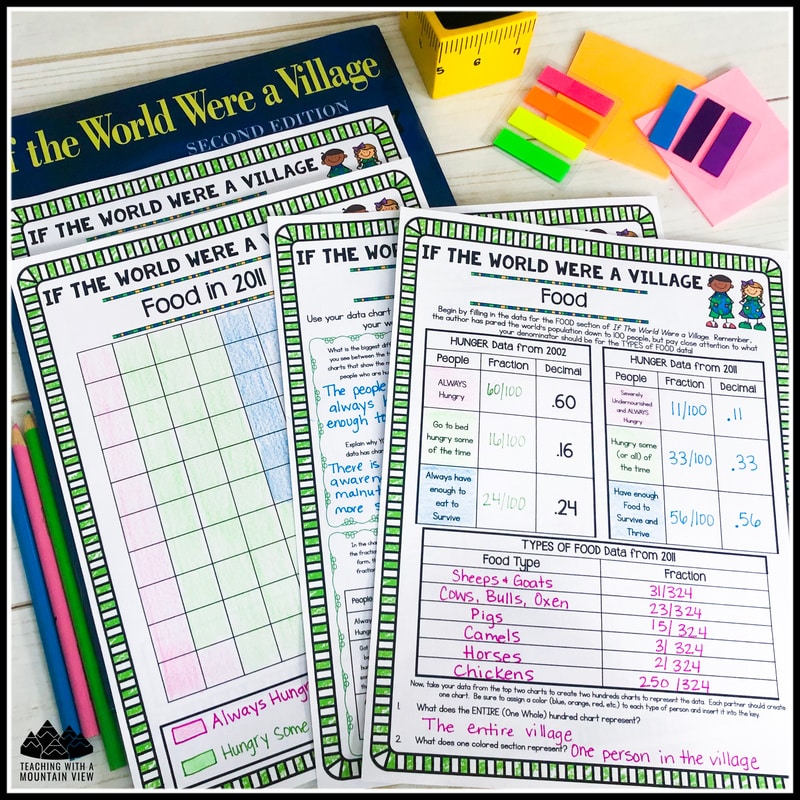
Getting Started with the Project
At the beginning of the lesson, I introduced the books, as well as the website 100people.org, which I also used in some of the questions. I explained the premise of the book, and I read the first page that described the data in the book. We talked about how the 100 people represented the ONE whole village and each square represented one person which represented 69 million people.
Then, I split my students into groups and explained their assignment to them. First, they would collect the data from their book and write it as fractions and decimals. Then, they would display their data on a hundreds chart. Finally, they would complete 6 tasks/questions about the data.
Differentiating the Fractions and Decimals Project
The questions and data are different for all of the sections. Therefore, I was able to differentiate a bit. My group that needed the most challenge got the FOOD section. The group that would need the most support worked through the NATIONALITIES section. The other two sections are somewhere in the middle. 🙂
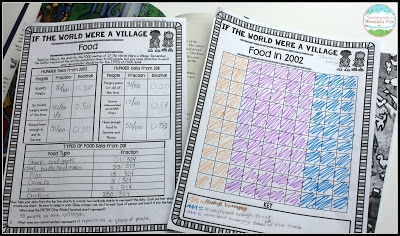
I had my students work in pairs within a group. That is, each pair of students had one packet but there were two or three pairs working on the same section. I let them work near each other in case they needed support from their peers. If you have more time than I did (only one lesson period), you could have every student complete all four sections of data!
Here is what you will need for each pair of students:
*One copy of the page of the book they are working on from If The World Were a Village
*A copy of the Data Page, Question Page, and Hundreds Charts (Included in FREE download)
*Colored Pencils or Markers
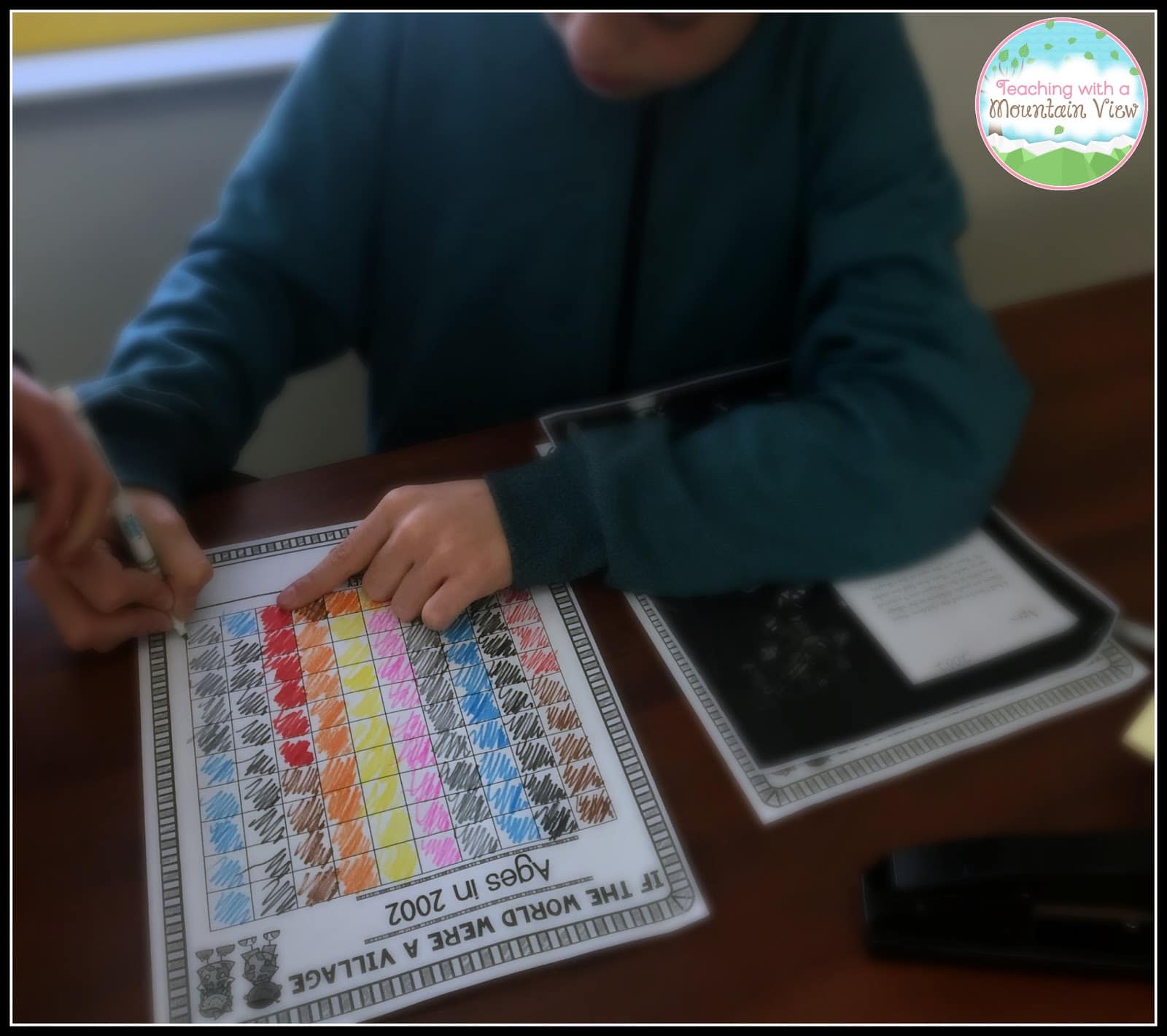
(NOTE: Since I only found a couple of each book at the libraries around town, I ended up making copies of the data pages from the book. It is my understanding that teachers are allowed to copy a minimal number of pages out of a book for student use only.)
I also had my observation while I was teaching this lesson, and it went very well. The students were incredibly engaged and were making great connections and having many “Ah HA!” moments during their work. It was really beneficial for me to walk around and talk to the students about what they were doing and ask them questions about their work.
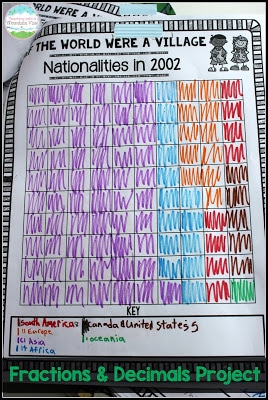
When we were done, we debriefed together and discussed our data. We looked at some of the changes over time and why we think some of the statistics changed. We also talked about our hundreds charts and how they made evaluating the data a bit easier and what other ways we could represent the data. We discussed why I chose to have them use a 100 chart to show their village’s population, etc. Overall, it was incredibly meaningful for them. It is also going to make a wonderful bulletin board when I find the time to hang it up!
Grab this Math Project for FREE
If the World Were a Village Book
If you are searching for the book, grab it on Amazon below.
(Amazon Affiliate Links included in the post above. I may receive a small commission for Amazon purchases made.)
Mary Montero
I’m so glad you are here. I’m a current gifted and talented teacher in a small town in Colorado, and I’ve been in education since 2009. My passion (other than my family and cookies) is for making teachers’ lives easier and classrooms more engaging.







